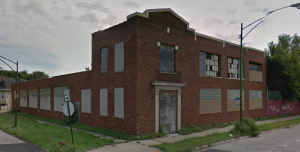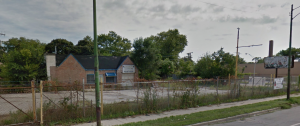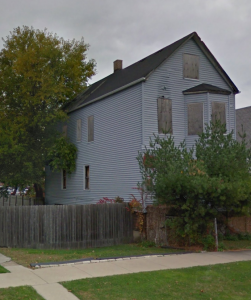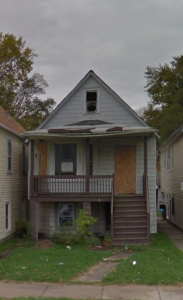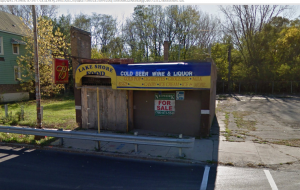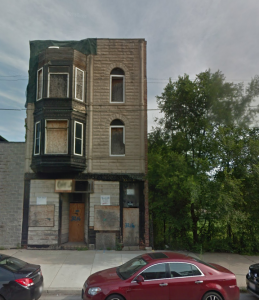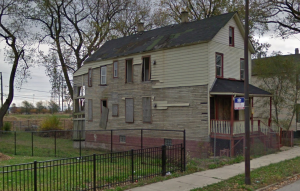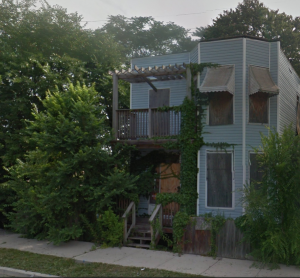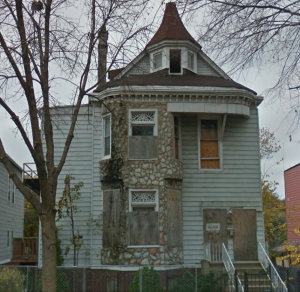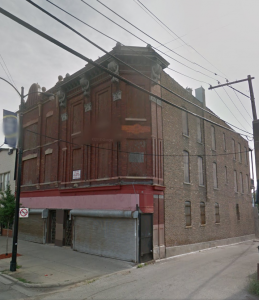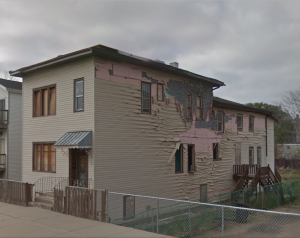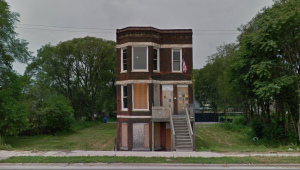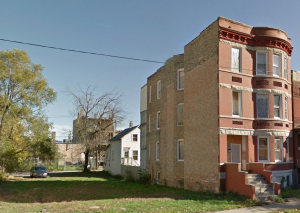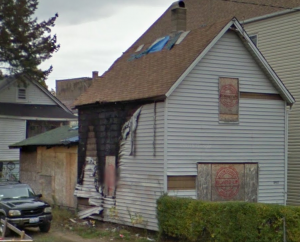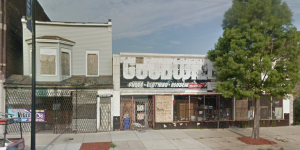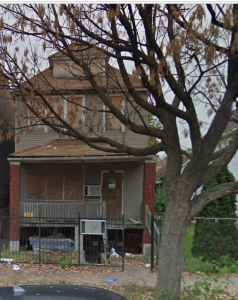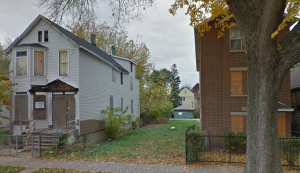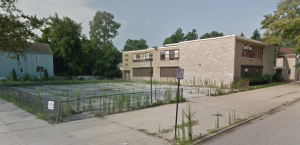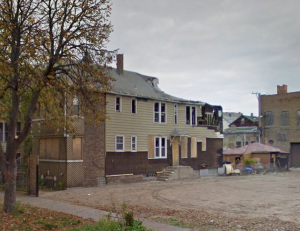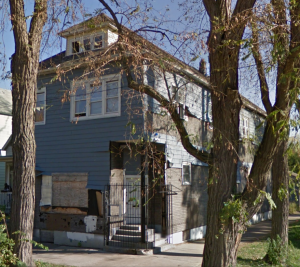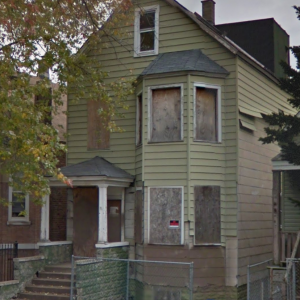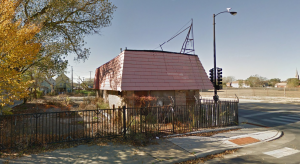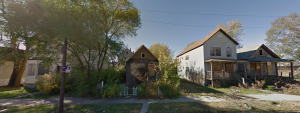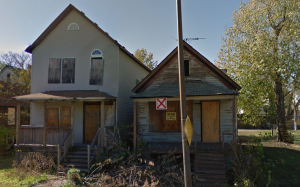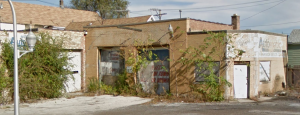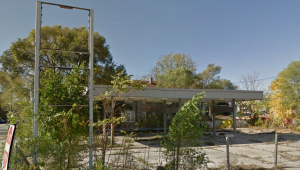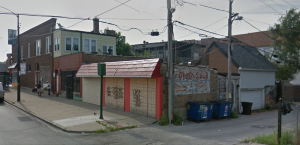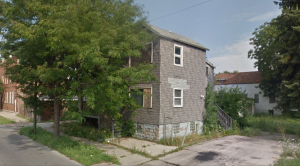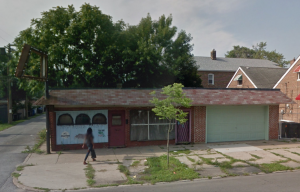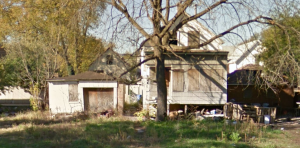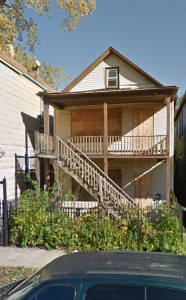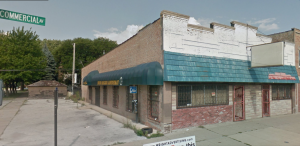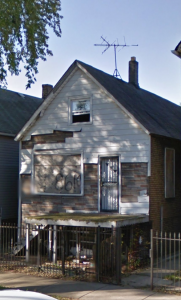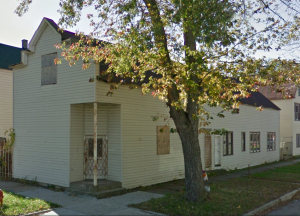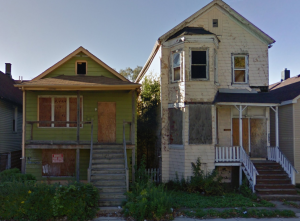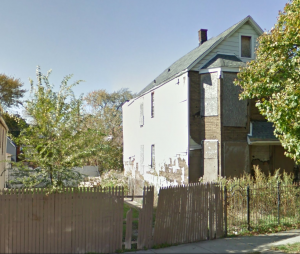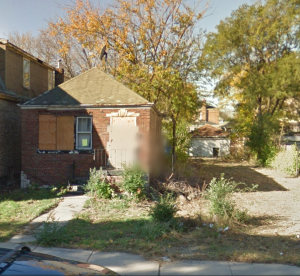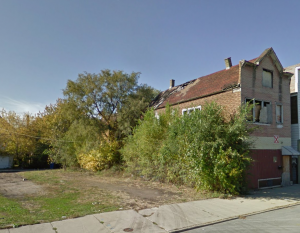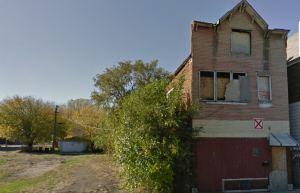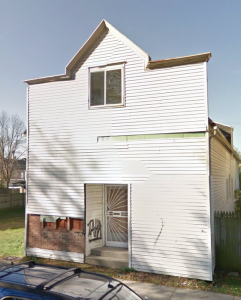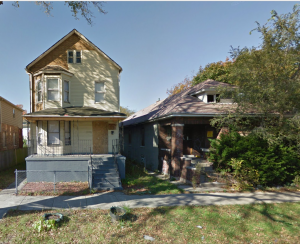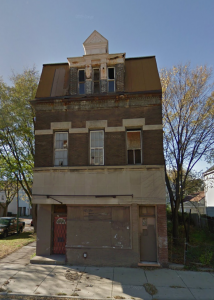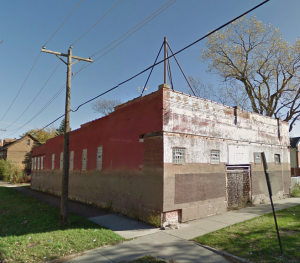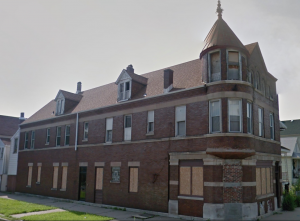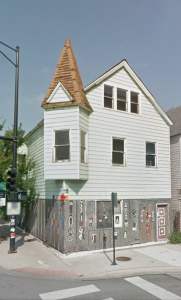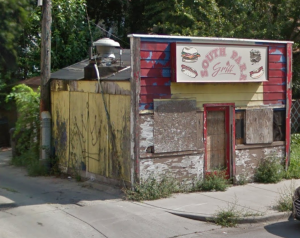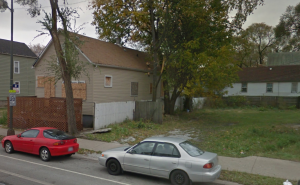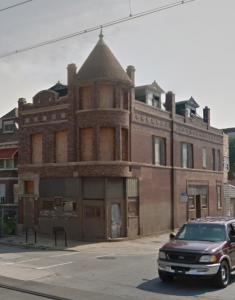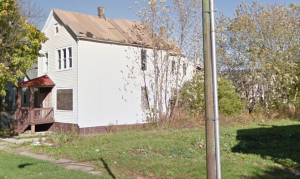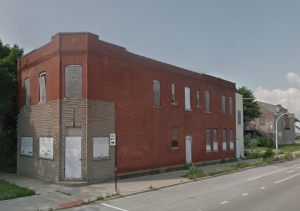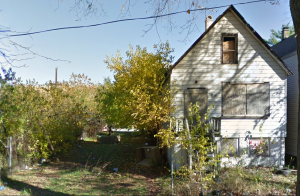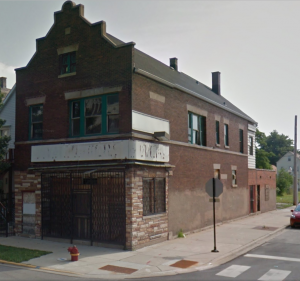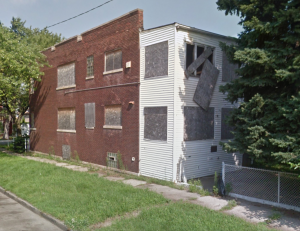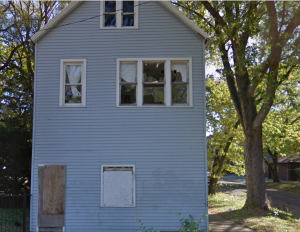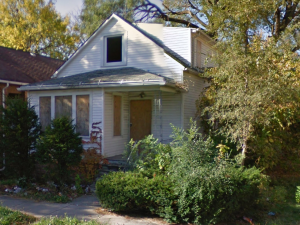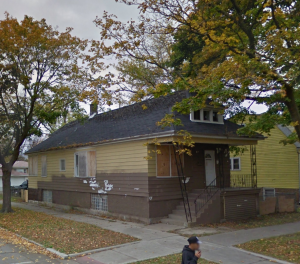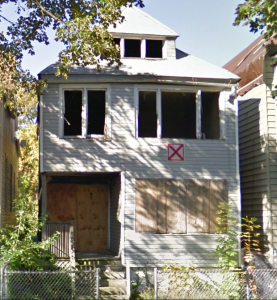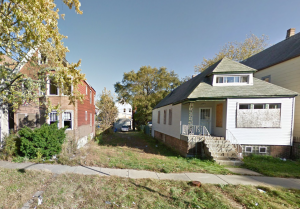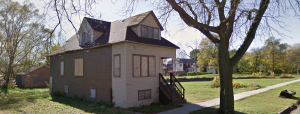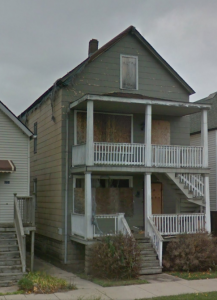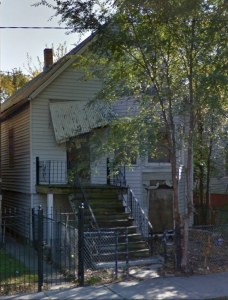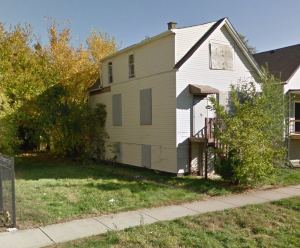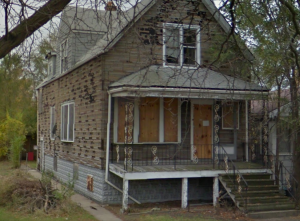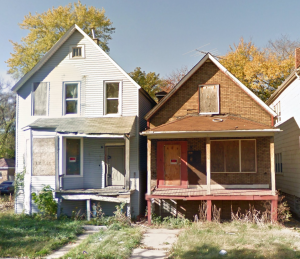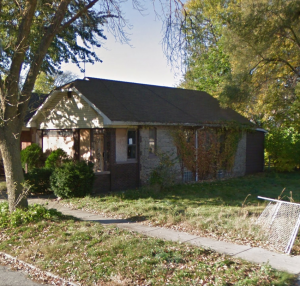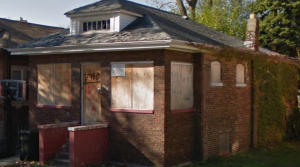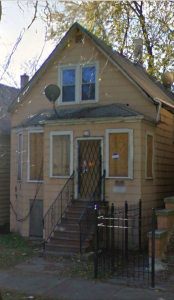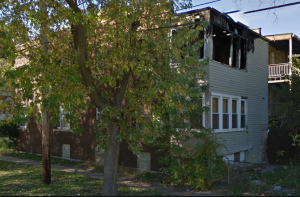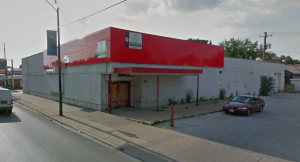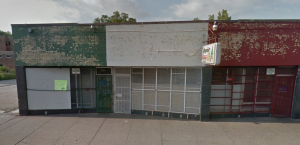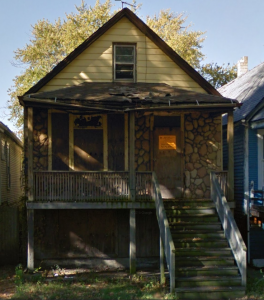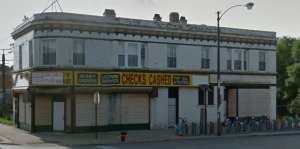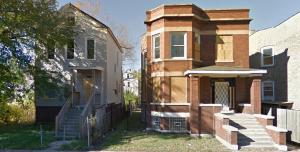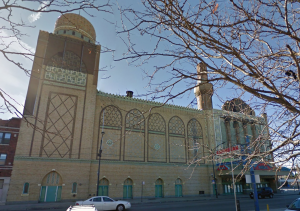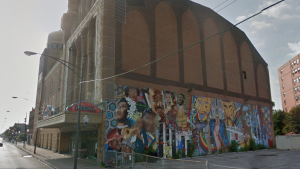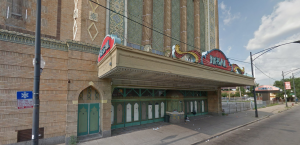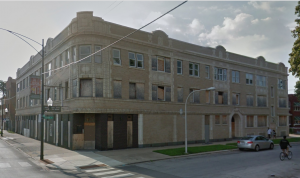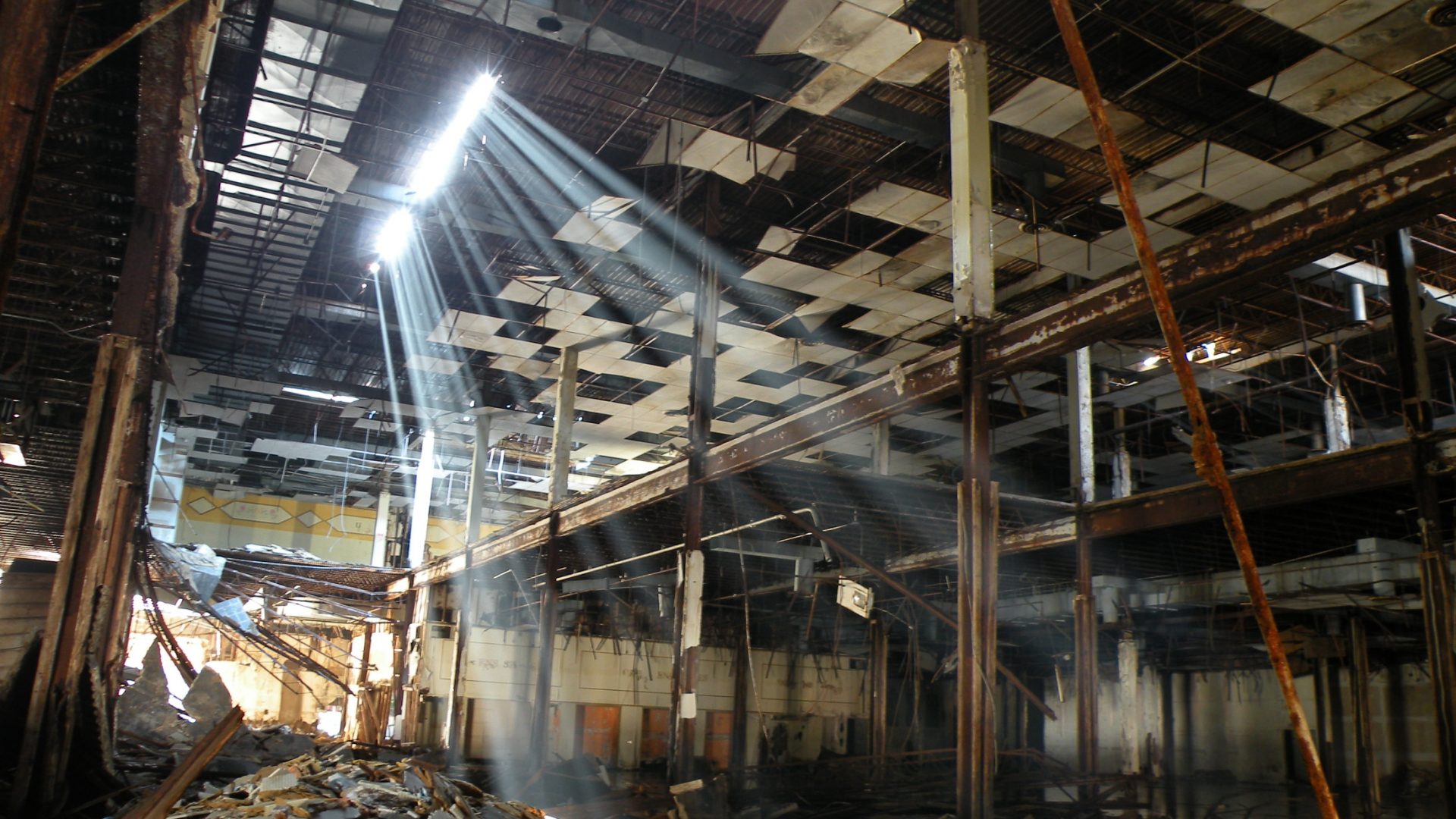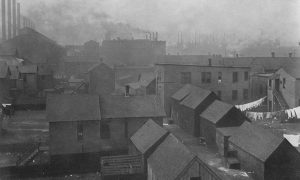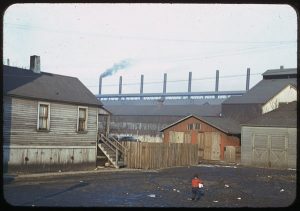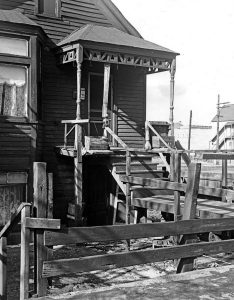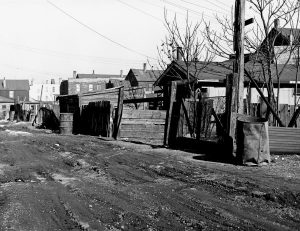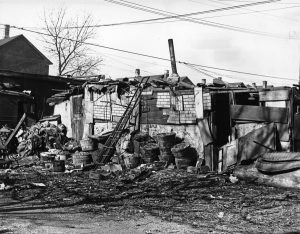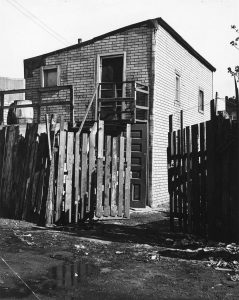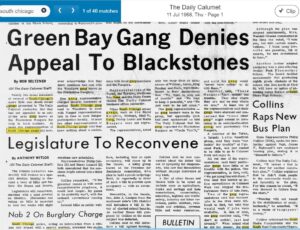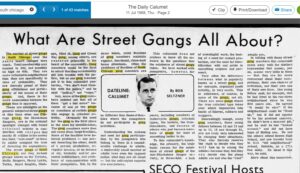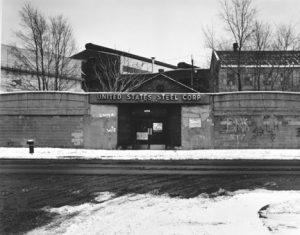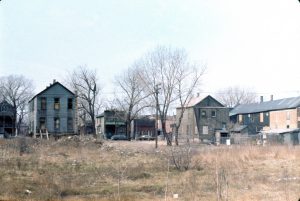| Origins | Settled by Jefferson Davis in 1833 and annexed in 1889 |
|---|---|
| Area | Far Southeast Side |
| Boundaries | 79th Street on the north, South Chicago Avenue and South Harbor Avenue intersection on the south, Lake Michigan on the east, Chicago Skyway I-90 toll way on the west |
| Gangs founded | Latin Stones, Latin Dragons, Spanish Gangster Disciples, Royal Knights, Spanish Kings (South Chicago), Very Mellow People, |
| Gangs headquartered | Latin Counts, Latin Kings, Vice Lords, Black P Stones, Gangster Disciples, Latin Dragons, |
This area was sacred Native American land for thousands of years before it was settled by the white man in 1833. The man that drew up plans for settlement was none other than U.S. Army Lieutenant Jefferson Davis, the same Jefferson Davis that was the president of the Confederacy during the Civil War. He was a land surveyor with the United States Army at this time and wanted to figure out a way for the town of Chicago to connect with the Illinois Michigan Canal and saw potential with connection with the Calumet River; however, his discoveries were not considered and the area was only sparsely settled by Irish immigrants for the next few decades. One little settlement did grow out of these Irish settlers called “Ainsworth” but that never materialized into an official incorporation; however, it was still regarded as a town.
In the year 1861 this area was annexed into Hyde Park Township; however, the annexation did little to add to growth in the area, but it did bring about a change in the name of Ainsworth, Bush, Millgate, Cheltenham/South Chicago to “South Chicago.”
In the year 1869 James Bowen began preparations to build up a steel industry in this community as he began platting land and subdividing it to create an industrial community, from here small industries began building factories in the area.
After the Great Chicago Fire of 1871 Swedish, Scottish, Welsh and German laborers from Chicago fled to this area after their homes and the businesses they worked for were destroyed in the fire.
In the year 1875 Bowen opened his planned Brown Iron and Steel Company which attracted many more workers to South Chicago. In the year 1881 North Chicago Rolling Mill moved their facility to this neighborhood and changed the name to “South Works,” which became a major source of employment in this community. With this entire boom in the steel industry the community was annexed into the city of Chicago in the year 1889. In the year 1901 U.S. Steel Corporation acquired South Works and the facility drastically expanded in size all the way up to 79th Street, which meant there were many more opportunities for employment and this brought an influx of Polish, Italian and some African Americans to the area. The African Americans were segregated to live in the far southern section of the neighborhood by the river which had the oldest and shabbiest houses.
At the start of World War I Mexican immigrants arrived in the area to fill in the employment spots left vacant by white workers that went off to war. The Mexican people also experienced discrimination in this neighborhood just like the blacks as some were violently attacked at times and they were not allowed to worship in white churches.
The first Irish settlers of the earlier 19th century built their homes in an area known as “The Bush” which is located in the eastern part of the neighborhood, these homes became run down and shabby as Mexicans and blacks were pushed to live in this area that also had the worst pollution from the factories that they worked in.
In the 1920s the northern half of South Chicago was built up more with houses after being barren for many years, this increased the population greatly, while on the southern half at around 92nd and Commercial there developed a shopping district that became like a downtown.
During the Great Depression years of the 1930s there was much stress and worries about secure employment and proper treatment from the steel industry and this led to the unionizing of steelworkers. The 1930s was also a time of repatriation that deported many Mexican workers until 1936, the Mexicans of South Chicago were mostly able to remain in this neighborhood and dodged deportation; however, their community would not grow until decades later.
In the later 1940s Croatian and Serbian immigrants came to the area and settled in the southern part of the neighborhood creating a very strong identity in this part of the community.
South Chicago was one of the few neighborhoods in the city that had Mexican street gangs in the 1940s and 1950s. These groups were often just zoot suit type groups and were never anything serious; however, there was sometimes deadly conflict. South Chicago was also home to many greaser gangs in the 1950s and 1960s.

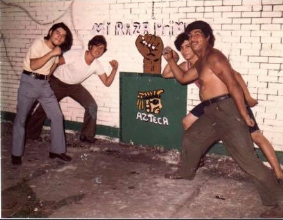
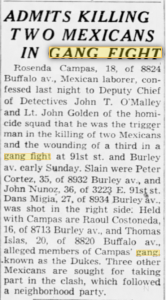
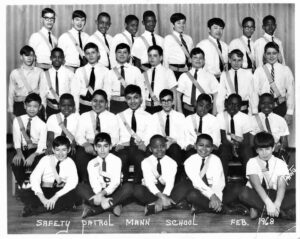
In the 1950s the older European groups that settled in the earlier days in the eastern part of the neighborhood left the area as African Americans slowly moved into the east side of the community. South Works was always the leading employer for this community as it employed over 20,000 employees by the 1960s and over 70% of men in the neighborhood were employed with the steel company, and this is what kept South Chicago as an economically functioning community.
South Chicago was always a community that had ran down areas and heavier pollution but by the 1960s deterioration set in more, and more of this community became dilapidated. Regardless of the hard times, this neighborhood was very tightly knit, and neighbors knew each other well. Now and again neighborhood clubs and petty gangs came and went since the 1940s but nothing significant at all. In the 1950s the worst activity that could be anywhere close to gang activity was the invasion of intoxicated homeless persons that caused a scene but nothing more.
In the year 1960, the Royal Knights formed in the neighborhood and became of the more prominent gangs in the area for the next 20 years. The Royal Knights may have formed because of black gangs forming in nearby South Shore like Devil’s Disciples and Blackstone Rangers but I am not sure.
In around 1960, the Mexican population began to slowly grow in South Chicago leading to some racial conflict but for the most part Mexican and white youths often associated with each other and even ran in the same gangs. In the early 60s the Saints (not Saints from the Back of the Yards), Bishops (not Bishops of 18th Street), Turks, Green Bay Gang, 92nd Street Gang, Stomp Lords, Tyrants, Dirty Dozen and Royal Knights took formation and became the main gangs of South Chicago in the 1960s.
In the year 1968, rumors began to fly around that at least one South Chicago gang connected with the Blackstone Rangers from Woodlawn and may have been asking for the Rangers to recruit among the significant black youth population in South Chicago. According the Daily Calumet July 11, 1968 article the Green Bay gang especially denied affiliation the Rangers but the article does mention a group called the “Mafia Rangers” that was in operation in South Chicago at the time. The article basically stated the Mafia Rangers were one of the gangs that did not defend any accusations of affiliating with the Rangers. Around this same year the Mafia Rangers were identified as a Blackstone Ranger group but the group identified was not from South Chicago. Could this South Chicago Mafia Rangers group have been part of the same Mafia Rangers that were part of the Blackstone Rangers? It is my opinion that this Mafia Rangers groups was indeed affiliated with the Mafia Rangers from the more upper south side; therefore, I believe the Mafia Rangers were the first Black P Stone group to ever settle the South Chicago streets in 1968 and were the first gang from outside the community to settle these streets.
Beginning in about 1968, South Chicago entered a new gang era as many of the usual gangs ceased operations. The Saints, Bishops, Mafia Rangers, and Royal Knights were still around entering the new decade but most everything else left these streets and a short time later in the mid-70s the Bishops ceased gathering. The Mexican population had always been below 10% for decades but by the year 1970 Mexican people made up about 30% of the population of the neighborhood and this is when some more racial clashing began and unfair treatment from the Chicago Police toward the Hispanic community of South Chicago. The most Hispanic group called “The Turks” ceased existence in the earlier 70s but the Bush Nation took formation as the largest Hispanic group in South Chicago. The Bush Nation had strong Mexican pride beliefs. As the name indicated the Bush Nation were from southern South Chicago from the “Bush” area and became one of the bigger gangs in the neighborhood. The Spanish Kings was another group from this neighborhood that was a Mexican gang that formed around this time.
The Latin Souls from the Back of the Yards arrived on these streets in 1971 shortly after they formed along 55th Street. The Latin Souls had a large following in the Back of the Yards and were quickly able to branch out into South Chicago as they went head to head with the Saints of South Chicago. I am not sure how long this Latin Soul branch lasted but it went on until at least 1972 but this group may have left the area around that time.
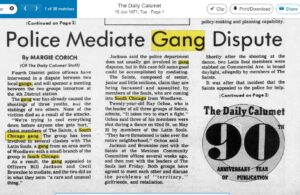
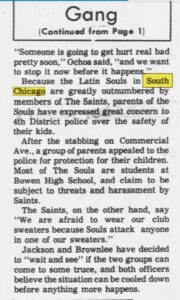
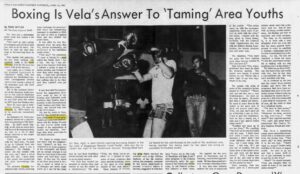
In 1976 three members from the Saints from the Back of the Yards came to 87th and Houston area and befriended Royal Knights. The Saints would put together a group that would become well-known in the neighborhood; however, most did not know the Saints that settled at 87th were not part of the South Chicago native Saints group.
In the year 1977, more would change for this thriving community as layoffs at South Works began happening and more were in the forecast, this instantly began depreciating the neighborhood and housing values were soon to drop. Finding employment at International Harvester in neighboring South Deering was no longer a good backup plan because they fell into trouble the same year. White flight started to occur in large volumes beginning in 1977 as African Americans and Mexicans took up residence in the community fleeing from rougher neighborhoods. Most of the white flight was happening in the eastern, southern and northern parts of the community. Much of the migrating black population was settling closer to 79th Street in the northern part of the community. The Hispanics were settling the southern and central parts of the community and even in the western part among the whites. Housing became cheaper in the community which could cater to struggling black and Mexican families.
In the year 1979, the next era of South Chicago area gangs began as Hispanic migration increased more rapidly. As Hispanic youths were moving in from gang populated neighborhoods like Pilsen and Little Village gangs from their areas attempted to establish themselves on these streets but were mostly deflected by native gangs.
In the year 1979, a new gang began in the neighborhood consisting of Mexican youths called the Latin Dragons. Some Ambrose gang members from Pilsen moved into this neighborhood in 1979 and absorbed into a new gang that formed in 1979 called the Very Mellow People started by Steve Hernandez. In 1979 the Royal Knights and Spanish Kings went extinct as Latin Dragons and VMPs began. Other new Hispanic gangs formed like the Young Bloods. The Latin Kings attempted settlement of the 79th Street area in 1979 but were mainly kept north of 79th in the South Shore community. This was the first Brush with Latin King gang activity in South Chicago but it was stopped within a year or less.
1979 was also the year that black street gangs from neighboring communities settled heavily in South Chicago having more successful settlement in this community than outside Hispanic groups. The Black P Stones were now heavily settled on these streets as their arch rivals the Black Gangster Disciples also arrived in large numbers. Four Corner Hustlers, Mafia Insane Vice Lords, Renegade Vice Lords and Conservative Vice Lords arrived from the west side of Chicago.
In the year 1980, the community fell on very hard times as South Works laid off many more employees and closed more of its facilities in the neighborhood. In 1979 there were still 10,000 employees at the plant, which was a 50% reduction but starting in 1980 thousands more were left unemployed. South Chicago soon fell into economic despair and even the industrial area of South Deering was not hiring as International Harvester completely closed in 1980, white flight accelerated in the early 1980s in South Chicago.
In the 1980 census African Americans made up just short of 50% of the population while Hispanics made up 40% which goes to show how rapid the white flight was and of course this brought some disinvestment and redlining to the community. Now Hispanic and black settlement reached the western part of the community in the early 1980s as did Hispanic and black gang settlement. Western South Chicago has newer homes that have housed middle-class black and Hispanic families while the eastern part is more blighted.
In the year 1981, members of the Latin Counts and Latin Kings moved into the neighborhood and slowly began to recruit. The Spanish Gangster Disciples formed out of the guidance of formerly incarcerated Maniac Latin Disciple gang members some of whom were former Royal Knights from the neighborhood that had flipped to MLDs in prison and now that they were released in 1981 they got together with the Saints of 87th and formed the Spanish Gangster Disciples in the neighborhood instead of starting a Maniac Latin Disciple branch. The original Saints group was now extinct at this point.
In the year 1981, Latin Kings from an older 79th and Clarendon (South Shore) group formed in the Bush after incarcerated 79th Street members were released. These Latin Kings dwelled north of the 79th street border on the South Shore side and did not last long. In 1981, Ray and other members from this group formed the 89th and Muskegon Latin Kings in 1981. By 1982 more Latin Kings got out of prison and solidified 89th and Muskegon as they began to turn out Bush Nation into Latin Kings.
The Latin Counts would begin recruiting and developing by this time and by 1983 were in full force, a short time later Latin Kings boomed more as more Bush Boys flipped to Latin Kings and the Latin Kings opened more territory all the way down to the neighboring East Side neighborhood.
The Latin Kings would soon swell in numbers to 75+ members in the neighborhood and became one of the larger outfits in the community.
The Latin Dragons and Spanish Gangster Disciples were also very popular group in the 1980s and were enemies during this time period. Latin Dragons, Latin Counts and Latin Kings were all allies.
The black gangs seemed to have their own issues in the area separate from the Hispanic gangs; however, there were several times when violence would happen between the Hispanic and black gangs.
By the mid-1980s South Chicago well-known gangs were: Black Gangster Disciples, Mafia Insane Vice Lords, Four Corner Hustlers, Renegade Vice Lords, Conservative Vice Lords, Black P Stones, Latin Kings, Latin Counts, Latin Dragons, Spanish Gangster Disciples, Young Bloods, and Very Mellow People.
In the year 1988, the Young Bloods engaged in a vicious war with the Latin Kings that lasted two years until the Young Bloods were defeated causing them to join the ranks of the Latin Counts, Latin Dragons, Very Mellow People, Spanish Vice Lords while some members started the Latin Stones gang in 1990. Ambrose would arrive in 1995 which added more to this intense gang landscape in east South Chicago after they converted the Very Mellow People. In west South Chicago the Black P Stones, Vice Lords and Gangster Disciples were at war many times tangling with Mexican gangs.
Starting in the 1980s South Chicago became a war zone of bloody gang conflicts as gangs battled over drug turf. In 1992 South Works closed its doors permanently which economically devastated the community even more. South Chicago soon became one of the more violent neighborhoods in Chicago and still is regarded as one of the more dangerous neighborhoods in the city.
By the mid-1990s the main Gangs of South Chicago were: Gangster Disciples (Formerly Black Gangster Disciples), Black P Stones, Conservative Vice Lords, Renegade Vice Lords, Four Corner Hustlers, Mafia Insane Vice Lords, Latin Kings, Latin Counts, Latin Dragons, Ambrose, Spanish Gangster Disciples and Latin Stones.
Many parts of South Chicago are severely blighted as just about every block east of Yates Boulevard has multiple abandoned homes and buildings. West of Yates Boulevard has almost no shuttered homes or buildings, but east of Yates has abandoned buildings that have been deserted for several decades, this part of South Chicago also has many vacant lots. South Chicago also has some of the most violent gang wars city-wide.
South Chicago is the birthplace of the Latin Stones, Spanish Gangster Disciples, and Latin Dragons.
In the 1970s South Chicago was dominated by the Saints, Royal Knights and Bush Nation.
In the 1980s South Chicago was dominated by Young Bloods, Latin Kings, Latin Counts, Latin Dragons, Spanish Gangster Disciples, Gangsters Disciples, Black P Stones, and Conservative Vice Lords.
In the 1990s and 2000s South Chicago was dominated by Latin Kings, Latin Counts, Latin Dragons, Spanish Gangster Disciples, Gangster Disciples, Black P Stones and Conservative Vice Lords
In the 2010s and later South Chicago is dominated by Latin Kings, Latin Counts, Gangster Disciples, Black P Stones and Conservative Vice Lords
Spanish Kings Established 1968-1980
Not sure where they were or so much when
Very Mellow People Established 1979-1995
In the area of 86th and Baltimore
Bush Nation 1968-1983
84th & Burley (The Bush) 1968-1983
Royal Knights Established 1960-1980
88th & Commercial
Black P Stones Established as Mafia Rangers 1968-present years
79th to 80th, Houston to South Shore Drive (EBE Jacktown Titanic Stones)
81st to 82nd, Houston to South Shore Drive (8 Deuce)
83rd to 84th, Kingston to Saginaw (No Limit Stones, Tony World)
83rd to 84th, Burnham to Muskegon (Quill Block)
86th to 87th, Phillips to Kingston (D Block Apache Stones)
87th to 88th, Essex to Colfax (No Limit Stones, Medina)
87th to 89th, Burley to Mackinaw (GME Roe Block)
90th to 92nd, Muskegon to Commercial (Bloodstones, Slaughter Town)
82nd & Escanaba (Shared with Conservative Vice Lords, Triple Bs)
82nd from Houston to Baltimore (Titanic Stones)
83rd & Colfax (No Limit Stones)
Kingston from 79th to 83rd (Kingston Killers)
79th to 83rd, Yates to Colfax (Terror Town)
87th from South Chicago Dr to Commercial
Escanaba from 90th to 91st (Slaughter Town)
Ambrose Established 1995-present years
86th to 87th, Baltimore to Houston Established 1995-present years
Latin Counts Established 1983-present years
91st to South Chicago Ave, Manistee to Houston (South Chicago Cs, South Insane C 91st)
90th to 92nd, Brandon to Burley
Latin Stones Established 1990-present years
81st to 83rd, South Shore Dr to Exchange Established 1990-present years
90th & Exchange Established 1993 or 1994
Twelfth Street Players Established 2007-2017
89th & Exchange
87th & Commercial
Saints Established 1976-1981
87th & Houston Established 1976-1981
Latin Kings Established 1981-present years
82nd & Houston
Buffalo from 83rd to 84th (Bush Latin Kings)
84th & Burley (Bush Latin Kings)
88th & Exchange (88 D-Hate)
89th & Commercial
89th & Muskegon Established 1981
Escanaba from 89th to 90th (89 Big Time)
83rd to 86th, South Shore Dr to Green Bay (Bush Latin Kings)
Four Corner Hustlers Established 1979-present years
81st to 82nd, Paxton to Crandon (081 SG)
Two Six
92nd & Exchange
Latin Dragons Established 1979-present years
83rd to 87th, Colfax to Commercial Established 1979 (Dragon Town)
88th & Buffalo (Buck Town)
90th & Houston
Gangster Disciples Established 1979-present years
Merrill from 79th to 80th
91st & Buffalo
77th to 80th, Stoney Island to Ridgeland (RBG GDs) borders in South Shore too
79th to 80th, Clyde to Paxton (MTG Dramaworld)
79th to 81st, Saginaw to Manistee (Lakeside GDs)
79th to 81st, South Shore Drive to Brandon (SMV)
81st to 83rd, Oglesby to Essex (OGB Barnone)
87th to 89th, Saginaw to Manistee (GMB Nutville Murda Ave)
80th & Marquette
Spanish Gangster Disciples Established 1981-present years
87th to 89th, Houston to Baltimore (Danger Zone) Established 1981-present years
Conservative Vice Lords Established 1979-present years
81st to 83nd, Muskegon to Exchange (Triple Bs)
84th to 86th, Escanaba to Commercial (Deathrow)
81st & Manistee (shared with Four Corner Hustlers)
82nd & Escanaba
83rd & Burnham
82nd & Escanaba (shared with Black P Stones)
83rd & Peoria (3rd Ward)
Mafia Insane Vice Lords Established 1979-present years
79th to 80th, Muskegon to Exchange (O-City)
81st Place & Exchange (Bad Black Brothers)
82nd & Coles
80th & Coles
83rd & Exchange
Renegade Vice Lords
79th & Coles
80th to 82nd, Exchange to Brandon
All images below are of vacant buildings at the time of the photo. All images are courtesy of Google Maps

